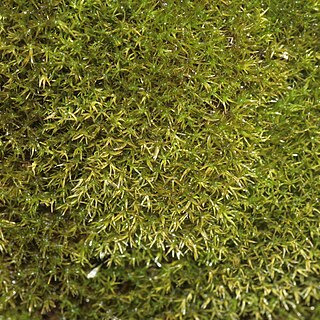Stems slender, fragile, 0.5-7 cm. Leaves more or less distant; costa ending 1-2 cells before apex to percurrent or short-excurrent as a flat to conical apiculus, occa-sionally ending in a pellucid cell, often scalloped along margins by projecting cell walls, at mid leaf with 2-4 or occasionally several rows of cells across adaxial surface; costa adaxial surface are U-shaped in section; basal cells gradually differentiated, elongate-rectangular, less to nonpapillose proximally, larger than distal cells, 20-50 µm, 2-4:1, walls firm, narrower on the margins, pellucid; distal laminal cells heterogeneous: subquadrate to short-rectangular or rhomboidal, with occasional diagonally transverse walls, longitudinally elongate especially distally near the costa, walls commonly irregularly thickened to porose, marginal cells smaller and more quadrate, ca. 7-10(-12) µm wide, 1-3:1, 1:2, seldom 2-stratose in patches, cell walls superficially flat to somewhat convex, firm-walled; papillae low, simple to 2-fid, 1-3(-5) per lumen, dense to scattered, occasionally absent. Sexual condition perigonial terminal and often also lateral proximally. Seta single, (0.04-)0.5-0.9(-1) cm. Capsule urn 0.5-0.9(-10) mm, often widest at the mouth when dry, exothecial cells thin-to thick-walled, 1-4:1, stomates phaneropore at base of capsule; annulus weakly vesiculose. Operculum ca. 0.5-1 mm, usually attached to the columella at least in some capsules. Calyptra ca. 1-1.5 mm. Spores ca. (13-)17-20(-22) µm.
Plants frequently glossy. Stems 10-20 mm long, central strand absent. Leaves keeled, ligulate to oblong-lanceolate, 0.5-2.0 mm long; apex acute; margins plane to recurved on one side below; costa percurrent to just excurrent; in section ventral stereid band weak. Upper laminal cells quadrate to short-rectangular, papillae scattered. Capsule systylious, peristome absent. Recognised by the glossy appearance, keeled leaves, lower margins recurved on one side and the systylious capsule.

